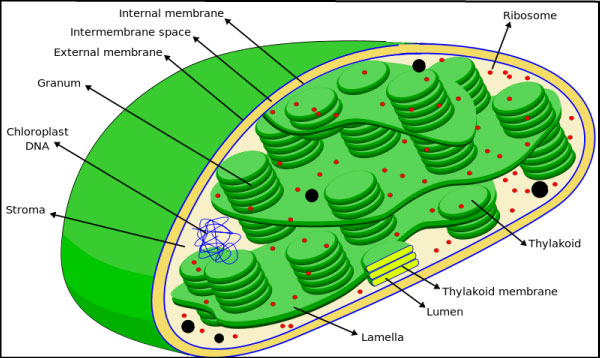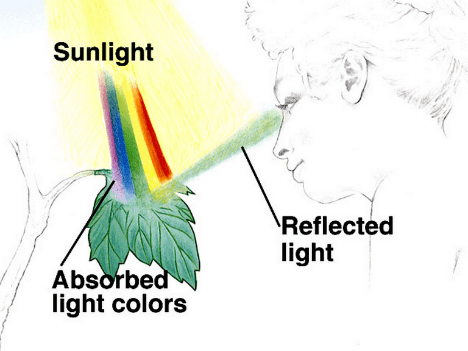Why Are Plants Green?
Plants, with their lush green leaves and verdant landscapes, have puzzled humanity for centuries. Why are they green? What purpose does their color serve? In this comprehensive guide, we delve deep into the science, evolution, and environmental factors behind the green hues of plants.
Introduction

Plants adorn our world with their vibrant colors, but green stands out as the dominant hue. Understanding why plants are green requires us to explore the intricate mechanisms of photosynthesis, the evolutionary advantages of chlorophyll, and the impact of environmental factors on plant coloration.
The Science Behind Plant Color
Chlorophyll: The Green Pigment
At the heart of every green plant lies chlorophyll, the pigment responsible for absorbing light energy during photosynthesis. This vital compound gives plants their characteristic green color by reflecting green wavelengths of light.
Absorption of Light
While chlorophyll absorbs most wavelengths of light, it reflects green light, making it appear green to the human eye. This selective absorption enables plants to harness sunlight for energy production.
Evolutionary Advantages
Sunlight Absorption
The predominance of green in plant coloration is not merely coincidental but evolutionary. Green leaves maximize sunlight absorption, which is essential for photosynthesis, the process by which plants convert light energy into chemical energy.
Camouflage
Additionally, green coloration provides plants with camouflage, allowing them to blend seamlessly into their surroundings and evade detection by predators.
Environmental Factors
Light Availability

The availability of light profoundly influences plant color. In regions with ample sunlight, plants tend to exhibit deeper green hues, whereas those in shaded areas may appear lighter or yellowish due to reduced chlorophyll production.
Temperature
Temperature fluctuations can also impact plant coloration. Cooler temperatures may intensify green pigmentation, while warmer climates could lead to lighter shades as chlorophyll production decreases.
Photosynthesis and Chlorophyll
Role of Chlorophyll in Photosynthesis
Chlorophyll plays a pivotal role in photosynthesis by capturing light energy and converting it into chemical energy. This process fuels the plant’s growth, allowing it to produce glucose and oxygen from carbon dioxide and water.
Plant Adaptations
Other Pigments
While chlorophyll dominates plant coloration, other pigments, such as carotenoids and anthocyanins, contribute to variations in color. These pigments, present in fruits and flowers, serve diverse functions, from attracting pollinators to providing antioxidant properties.
Variegated Leaves
Some plants exhibit variegation, which is characterized by patches of different colors on their leaves. This phenomenon results from genetic mutations or environmental factors and adds aesthetic appeal to ornamental plants.
Human Interaction
Plant Breeding
Humans have long manipulated plant color through selective breeding. This practice has led to the development of cultivars with vibrant colors or unique patterns, enhancing their ornamental value.
Agricultural Practices
In agriculture, farmers may alter plant color through techniques such as fertilization or shading to optimize crop growth and yield. These practices demonstrate our influence on the coloration of cultivated plants.
Seasonal Changes
Autumn Colors
As seasons change, plants undergo remarkable transformations in color. During autumn, deciduous trees shed their green leaves, revealing a kaleidoscope of red, orange, and yellow pigments before the onset of winter.
Winter Adaptations
In colder climates, some plants adopt strategies to survive harsh winters. Evergreen species retain their green foliage year-round, maintaining photosynthetic activity even in snow-covered landscapes.
Impact of Climate Change
Altered Pigment Production
Climate change poses significant challenges to plant coloration. Rising temperatures and shifting weather patterns can disrupt chlorophyll synthesis, leading to changes in plant color and potentially affecting ecosystem dynamics.
Ecological Consequences
The repercussions of altered plant color extend beyond aesthetics. Changes in vegetation coloration can disrupt ecological interactions, affecting pollinators, herbivores, and overall ecosystem stability.
The Future of Plant Color
Research and Innovation
Ongoing research seeks to unravel the complexities of plant coloration and its ecological significance. Advances in biotechnology and genetic engineering hold promise for developing resilient crops with enhanced pigmentation.
Environmental Concerns
However, amidst technological advancements, we must prioritize environmental conservation. Preserving biodiversity and mitigating climate change are crucial for safeguarding the vibrant hues of our natural world.
Conclusion
In conclusion, the greenness of plants is not merely a visual spectacle but a testament to the intricate interplay of biological, evolutionary, and environmental factors. As stewards of our planet, we must appreciate and preserve the diverse colors of the botanical world, ensuring a vibrant and sustainable future for generations to come.
FAQs
What causes plants to be green?
Plants appear green due to the presence of chlorophyll, a pigment that reflects green light while absorbing other wavelengths for photosynthesis.
Are there plants that aren’t green?
Yes, some plants exhibit different colors due to additional pigments like anthocyanins or carotenoids, which may produce red, yellow, or purple hues.
How does chlorophyll work?
Chlorophyll captures light energy from the sun and converts it into chemical energy, initiating the process of photosynthesis in plants.
Do plants change color?
Yes, plants undergo seasonal color changes, such as autumn foliage shedding green leaves for vibrant reds and yellows before winter dormancy.
Can humans alter plant color?
Through selective breeding and genetic modification, humans can manipulate plant color to enhance ornamental value or improve crop traits.
What does plant color indicate?
Plant color can signify various traits, including environmental adaptation, pollinator attraction, or nutrient status, providing insights into plant health and ecology.



